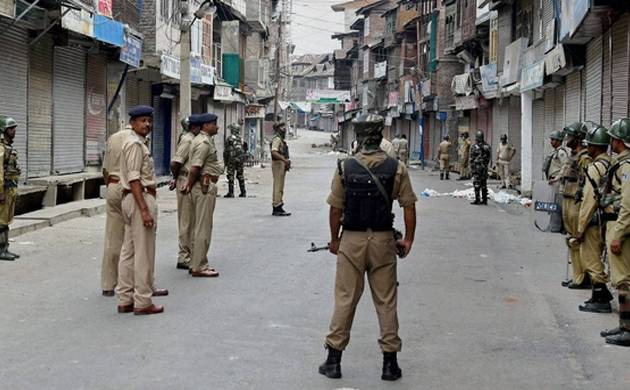Before moving on to the history of Indian flag, let me answer,
Why Do Countries Need a Flag?
Each country needs a flag as a visual representation of its people—and to distinguish it from other nations. A flag is also a code of honor. When anyone sees an Indian flag, he gets reminded of a country called the India and its people.
Where on earth did the word flag come from? From Vexillum, a latin word meaning flag or banner. Over 4,000 years ago, the first flags were called vexilloid and they were made of metal or wooden poles with carvings.
They helped ancient armies coordinate on the battlefield—identify the allies from the enemies. They were also used to honor those who lost their lives in the fight.
Today, every country has a national flag made of fabric. It is hoisted on a flagpole and flown so that everyone can be reminded of the values and history of the country.
Flying a flag is also a way to show pride and ownership. If you find a building anywhere in the world with the Indian flag, you can be sure it is Indian territory—a consulate, embassy, or headquarters.
A country’s flag also helps to unite people. By having the same flag, we Indians have a common symbol to bring us closer together—at home or abroad.
Flags show ideas which would otherwise take many words. On sad occasions, country flags are flown at half-mast to honor the dead, and draped over the coffins of national heroes.
Countries usually design their flag with certain colors or shapes to stand for specific meanings. Sometimes, a flag is altered to represent new messages or events. And so is the Indian flag, altered at various times in history.
Below is the journey of Indian Flag.
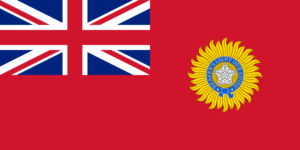
1880 – British india flag
1880 – Flag of British India.
This is the first single indian flag raised by British. The flag included the Union Flag in the upper-left quadrant and a star of India capped by the royal crown in the middle of the right half.
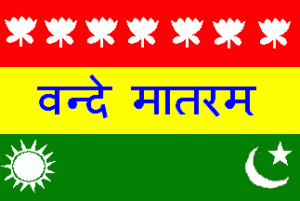
Unofficial flag of India in 1906
1906 – Unofficial flag of India in 1906
It is said that, the national flag was first time hoisted on 7th of August in 1906 in the Green Park (also called as Parsee Bagan Square) in the Calcutta (current Kolkata). It was a simply designed flag using three horizontal strips of tri colours (red, yellow and green). The uppermost green colour strip contains eight (8) white lotus flowers. The middle yellow colour strip is written in the center with “Vande Matram” in Hindi. And the lowermost red colour strip contains a crescent (left side corner) and a Sun (right side corner).
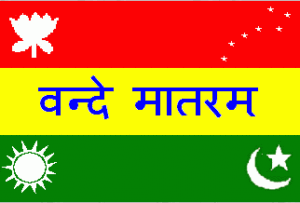
1907 – Indian flag
1907 – The Berlin committee flag, first raised by Bhikaiji Cama in 1907
According to the history, it is said that Indian national flag was hoisted second time in the Paris by the Madame Cama with her banished revolutionary band in 1907. Later that flag was exhibited in the social conference of Berlin. The second flag was little different from the first one. The uppermost orange colour strip contains one lotus flower and seven stars (identifying the Saptarishis). The middle yellow colour strip is written with “Vande Matram” in Hindi in the center. And the lowermost green colour strip contains a Sun in the left corner and a white crescent and star in the right corner.
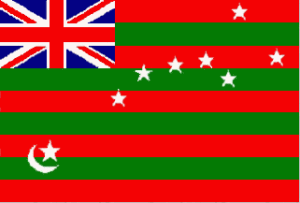
flag used during the Home Rule movement in 1917
1917 – The flag used during the Home Rule movement in 1917
The third flag went up in 1917 when our political struggle had taken a definite turn. Dr. Annie Besant and Lokmanya Tilak hoisted it during the Home rule movement. This flag had five red and four green horizontal strips arranged alternately, with seven stars in the saptarishi configuration super-imposed on them. In the left-hand top corner (the pole end) was the Union Jack. There was also a white crescent and star in one corner.
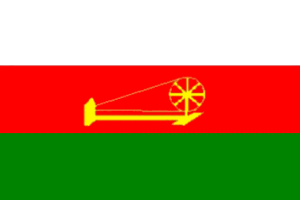
The flag unofficially adopted in 1921
1921 – The flag unofficially adopted in 1921
During the session of the All India Congress Committee which met at Bezwada in 1921 (now Vijayawada) an Andhra youth prepared a flag and took it to Gandhiji. It was made up of two colours-red and green-representing the two major communities i.e. Hindus and Muslims. Gandhiji suggested the addition of a white strip to represent the remaining communities of India and the spinning wheel to symbolise progress of the Nation.
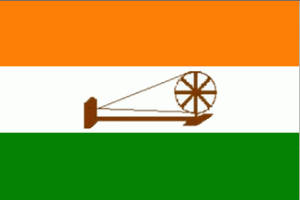
The flag adopted in 1931. This flag was also the battle ensign of the Indian National Army
1931 – The flag adopted in 1931. This flag was also the battle ensign of the Indian National Army
The year 1931 was a landmark in the history of the flag. A resolution was passed adopting a tricolor flag as our national flag. This flag, the forbear of the present one, was saffron, white and green with Mahatma Gandhi’s spinning wheel at the center. It was, however, clearly stated that it bore no communal significance and was to be interpreted thus.

The present Tricolour flag of India
1947 – The present Tricolour flag of India
On July 22, 1947, the Constituent Assembly adopted it as Free India National Flag. After the advent of Independence, the colours and their significance remained the same. Only the Dharma Charkha of Emperor Asoka was adopted in place of the spinning wheel as the emblem on the flag. Thus, the tricolour flag of the Congress Party eventually became the tricolour flag of Independent India.





